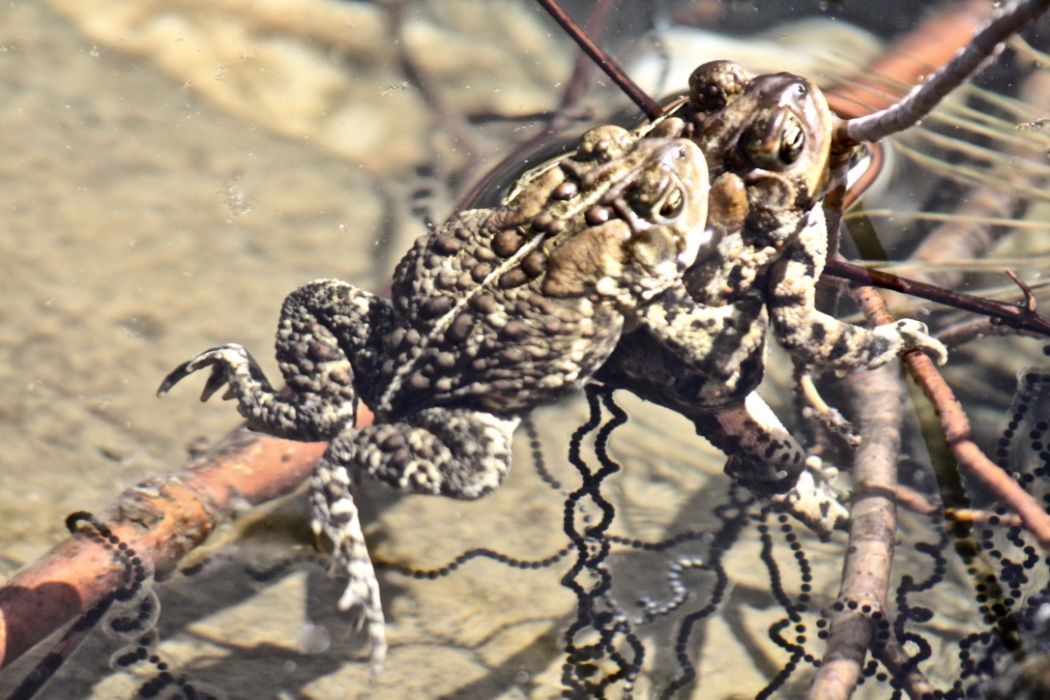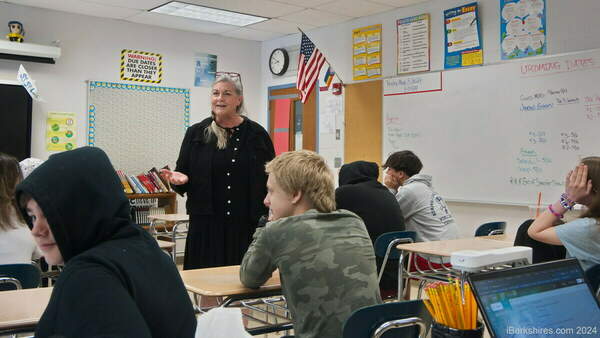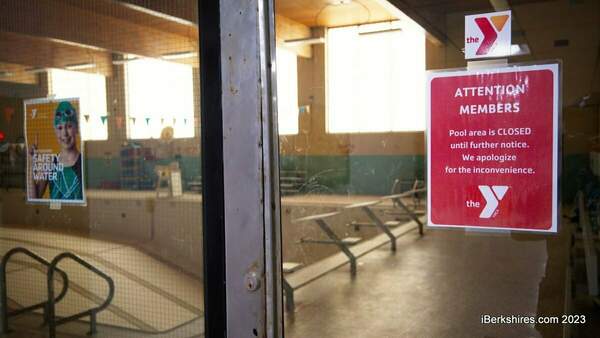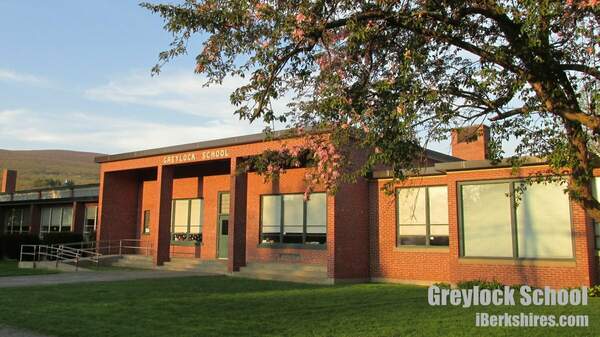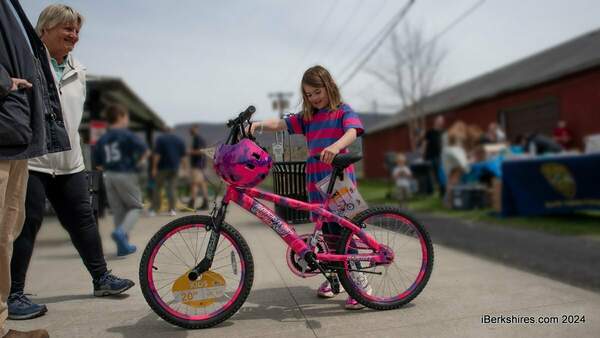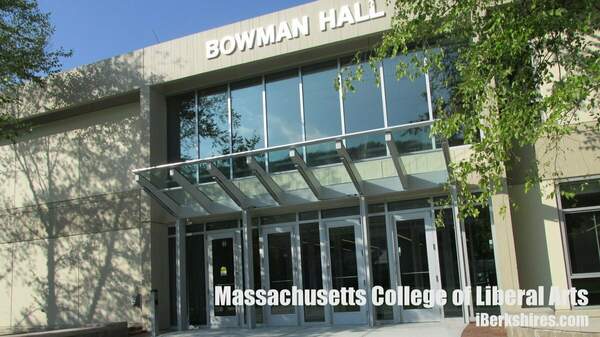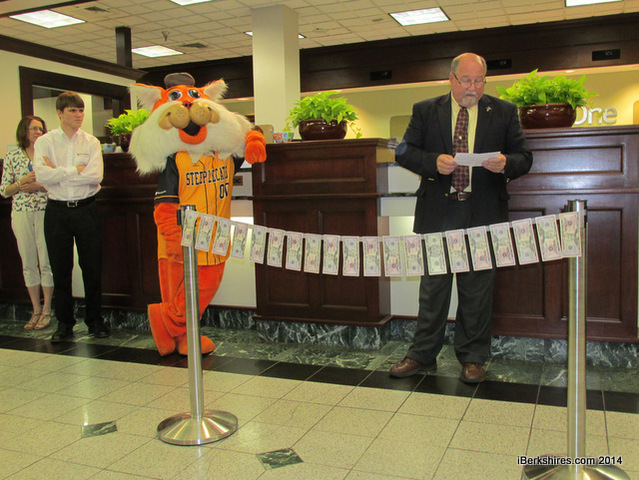
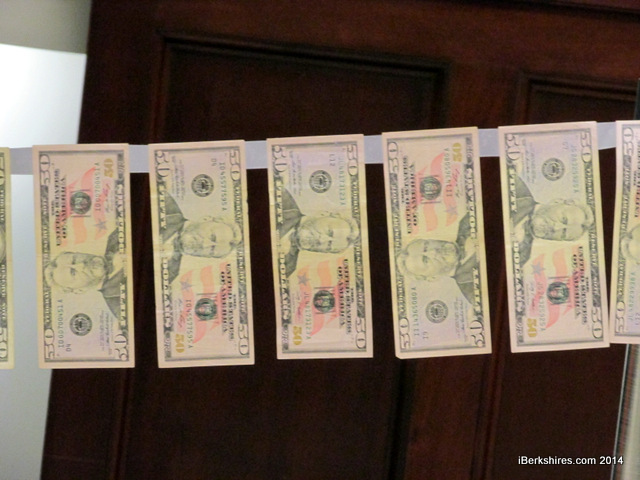
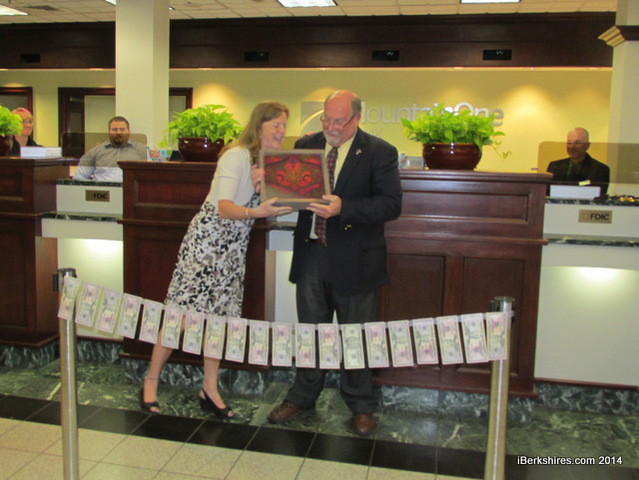
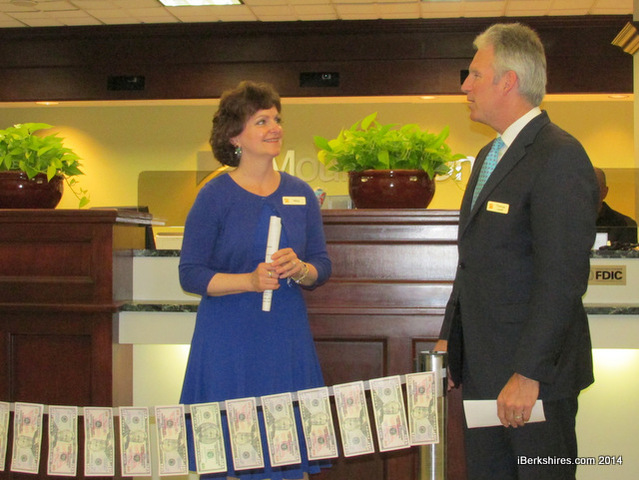
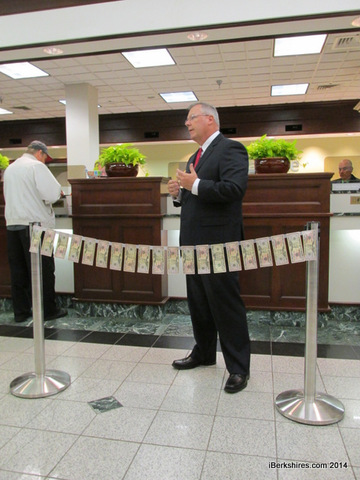
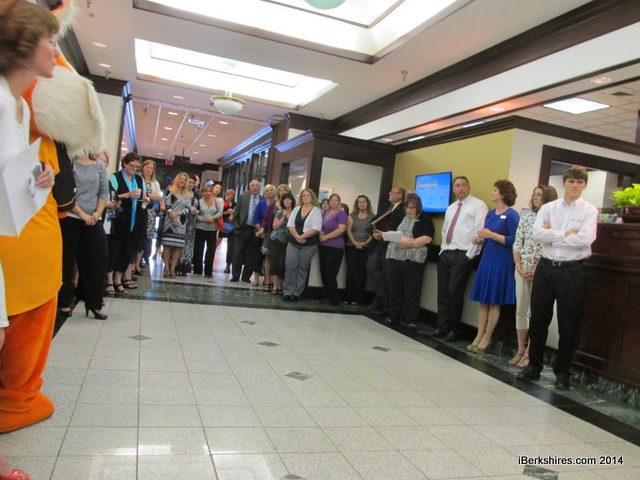
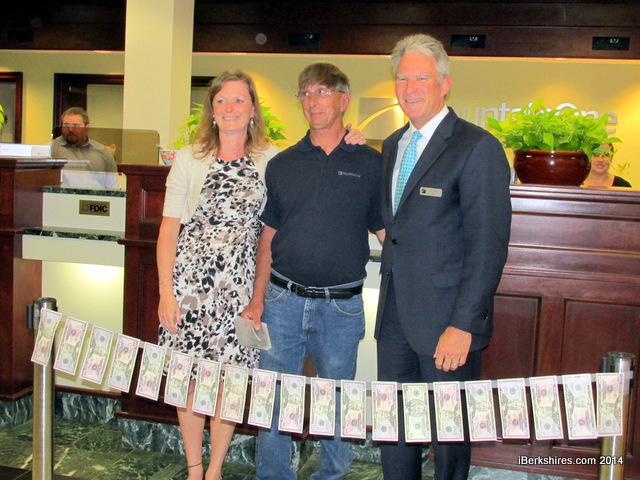
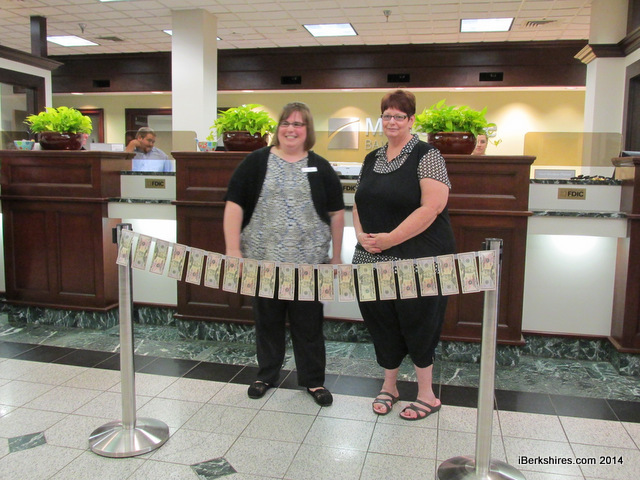
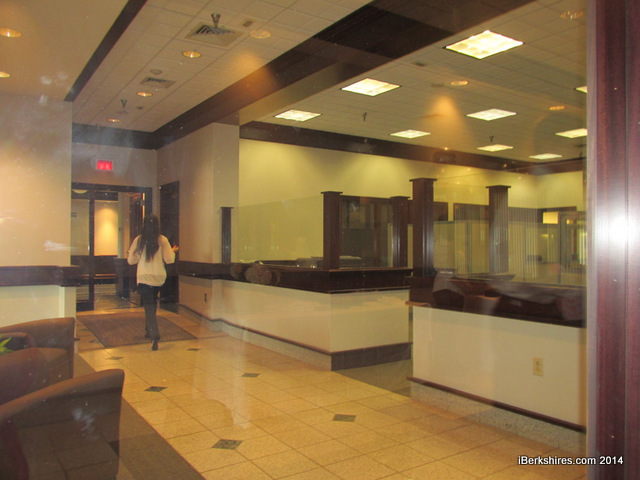
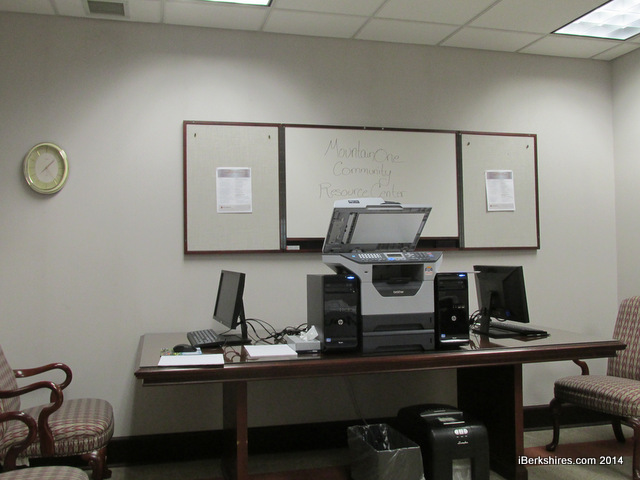
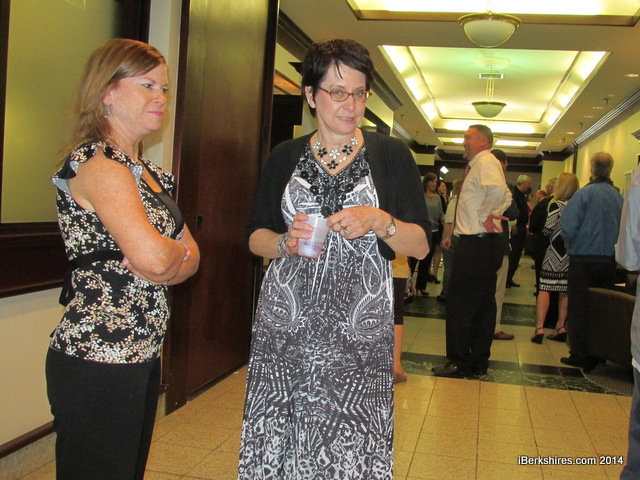
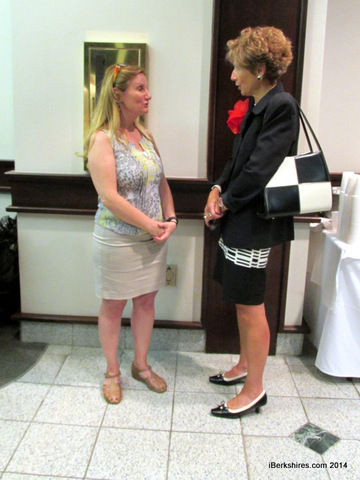
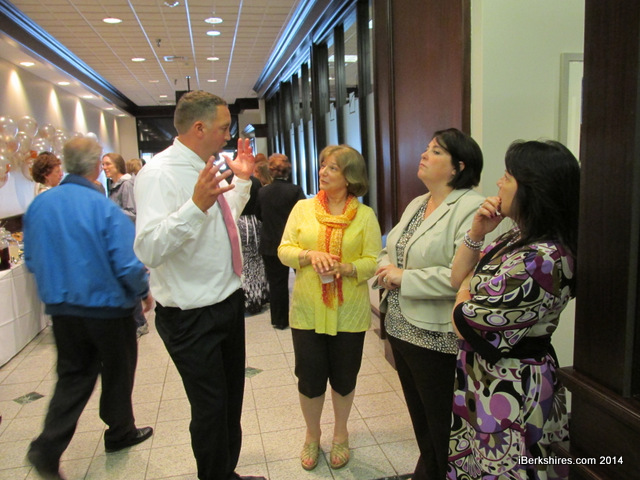
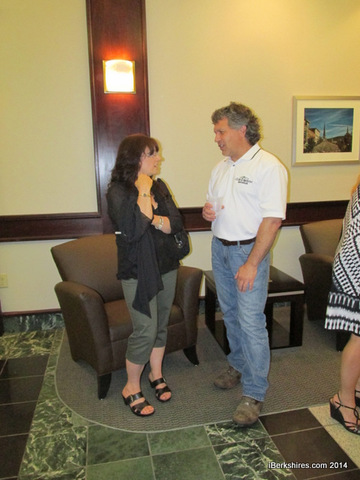
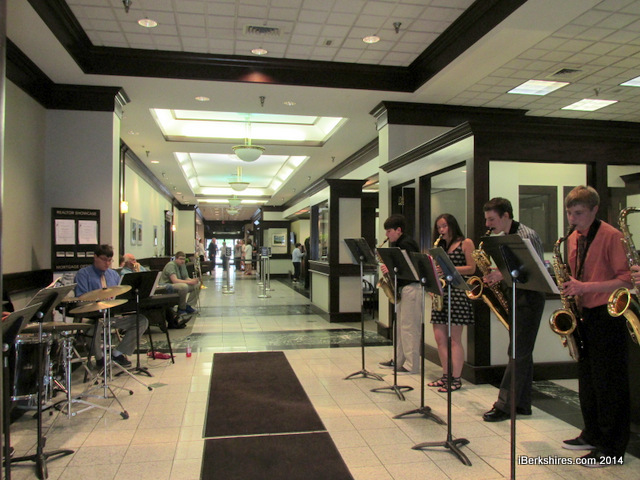
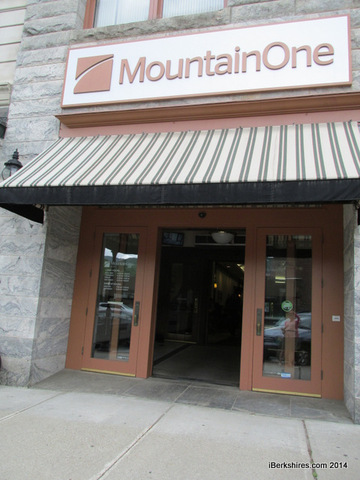
MountainOne Bank Celebrates Newly Refurbished Interior
 MountainOne cuts a money ribbon (donated to the Berkshire Food Project) to mark its newly renovated offices and lobby. MountainOne cuts a money ribbon (donated to the Berkshire Food Project) to mark its newly renovated offices and lobby. |
NORTH ADAMS, Mass. — The outside looks much the same as it did 122 years ago, but the interior of 93 Main St. has gone through a major change.
MountainOne cut the ribbon — appropriately made up of $50 bills — on Thursday afternoon to note the most significant renovations to the building since 1993.
The interior renovations ranged from the basement to the second floor, said Robert J. Fraser, president and chief operating officer of MountainOne Bank.
"This was quite a challenge, not only from the design but the concept since we started with the initial plan of doing over a floor for the auditors to make it more comfortable for all the auditors that come and the regulators," Fraser said. "All of sudden, it morphed into, 'You know, it's time to get something done here with our building.'"
The 1892 building, which still sports the original Hoosac Savings Bank name in its stone facade, is listed on the National Register of Historic Places.
Mayor Richard Alcombright, a longtime employee at the bank before running for office, said he remembered how on heavy paydays in the 1970s the long lobby with 10 tellers would be packed deep with customers, with tellers taking three to four minutes to process each passbook.
There was no direct deposit or ATMs, and loan calculations were done by hand.
"Times have changed, the community has changed, technology has changed and with that, the face and the expectations of our customers has changed," he said, joking that "banking is hard work. That's why I got out of it."
It's those changes in technology and the growth of what had been a small community bank into a much larger and diverse financial institution offering insurance and investment products that drove some of the interior work spaces.
The long line of teller windows is gone: There are now four windows but customer service and community banking operations are situated "front and center," said Mary Morrow, vice president of retail banking.
The growing use of online banking meant fewer people were coming into the bank regularly.
"People kept saying it looked empty in here ... and it's a huge space," she said. Moving the customer service areas that were tucked around the corner out in front made them easier for customers to find, large glass dividers rather than walls makes it easier to communicate and monitor operations, and new work spaces were utilized for the differing functions of MountainOne.
More safety and security features were also incorporated, including camera and limited access to the upper floors.
"I think we look more modern and yet we've been able to retain the aesthetics of this building," Morrow said. "With the marble floors and all the woodwork and the details. ... It was not ripping out it.
"Not only are we going to have a presence in our community with a brick and mortar branch, we're going to have people here to serve our customers."
The architects were DRL Architects and the contractor was Burke Construction. The bank was kept open throughout the renovation.
"It was a very challenging physical location and incorporated all the needs of today's banking environment," Fraser said. "They created an open and modern space for us while maintaining the dignity of the space and the architectural millwork throughout this building and preserving a lot of its history."
Bank officials took the liberty of presenting Alcombright with a framed square of the rather loud carpet that had been on the upper floors. The mayor joked how he had wanted the rug in his house, "but now that I see it again, this is perfect."
The bank also honored employee David McKay with a Core Commitment Award, Aluminum level, given to those who excel in bringing the bank community together.
Kelli Kozak, assistant vice president and community development officer, introduced Berkshire Food Project manager Valerie Schwarz as the recipient of the $1,000 "ribbon." Schwarz has been collecting donations to give out gas and grocery cards to those who are struggling after losing their jobs at the former Northern Berkshire Healthcare.
Schwarz thanked the bank for providing a community room "where I can come down and give out gift cards in a private and out of the way place."
She cautioned the ribbon cutters be careful with their scissors around her donation.
Thomas Leavitt, MountainOne Financial president and CEO, said the community room continues to be open with computers, printers, paper and telephones to help with setting up interviews, making calls, and creating and printing resumes.
Leavitt thanked the staff of MountainOne for their dedication.
"It's important to have good leadership in the company if you're going to see us keep what's been going strong since 1848 going to 2048," he said. "That's something we'd like to achieve .. I won't be here, but I would like to thank the next generation leadership.
"Without the people who day in and day out literally do the heavy lifting around here at MountainOne, we wouldn't be what we are."
Tags: banking, Berkshire Food Project, donations, MountainOne, renovation, ribbon cutting,

.jpeg)
